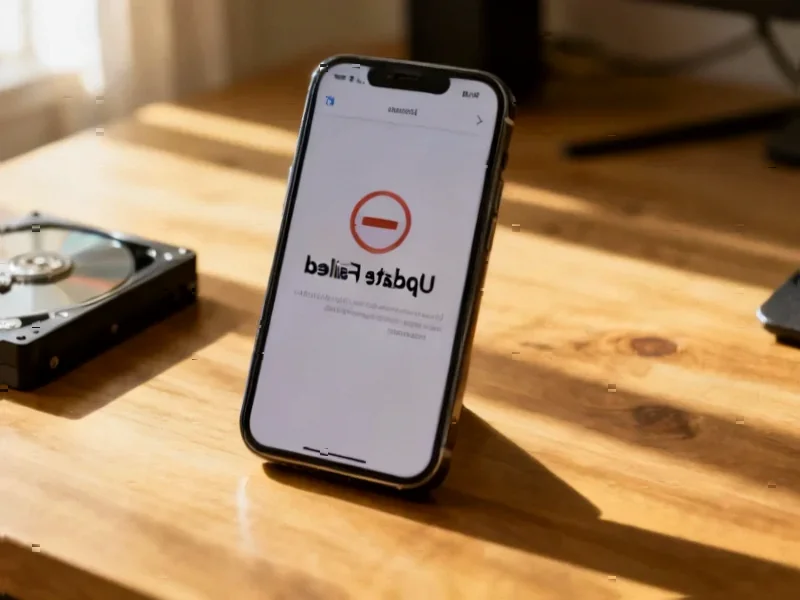According to Wccftech, Apple has publicly released iOS 26.1 with significant battery life improvements particularly for iPhone Air and iPhone 17 Pro Max models, based on early anecdotal reports from social media. The update is notably large at 11.44GB, which the publication attributes to the inclusion of Apple’s on-device foundational AI models. The release follows accurate predictions from Sunday about today’s public availability, marking another milestone in Apple’s software deployment strategy. This substantial update combines performance enhancements with advanced AI capabilities, creating an interesting test case for how users balance storage concerns against battery and feature improvements.
The Storage Versus Performance Tradeoff
The 11.44GB download size represents a significant commitment from users, particularly those with base storage configurations. While Apple’s support documentation typically outlines update requirements, this massive footprint suggests Apple is prioritizing on-device AI processing over storage conservation. This strategic choice reflects Apple’s commitment to privacy-focused AI that doesn’t rely on cloud processing, but it comes at a tangible cost to users’ available storage. The battery life improvements, if substantiated through broader testing, could justify this tradeoff by extending device usability between charges.
Shifting Competitive Dynamics in Mobile AI
Apple’s approach to bundling foundational models directly contrasts with competitors like Google and Samsung, who often rely more heavily on cloud-based AI processing. The early social media reactions highlighting battery improvements suggest Apple’s on-device strategy might deliver unexpected performance benefits beyond just privacy. If these battery gains hold up under scrutiny, Apple could gain significant leverage in the intensifying mobile AI wars, particularly as consumers become increasingly battery-conscious in their device selection.
Broader Market Implications
The specific mention of iPhone Air and 17 Pro Max models experiencing notable battery improvements indicates Apple may be optimizing for its premium segments first. This creates potential segmentation in user experience that could influence upgrade cycles and secondary market values. The substantial update size also raises questions about future iOS updates and whether Apple will maintain this approach of bundling large AI models with system updates. As AI capabilities become more integral to mobile operating systems, storage requirements may become a more significant factor in consumer purchasing decisions, potentially driving demand for higher-capacity devices.
Implementation and Adoption Challenges
The combination of battery improvements with massive download sizes creates an interesting adoption dynamic. Users with limited storage or slower internet connections may hesitate to install the update despite potential battery benefits. This could create fragmentation in the iOS ecosystem where some users benefit from optimizations while others delay updates due to practical constraints. Apple will need to carefully manage these tradeoffs in future updates, potentially exploring more modular approaches to AI model deployment that don’t require such substantial initial downloads.




